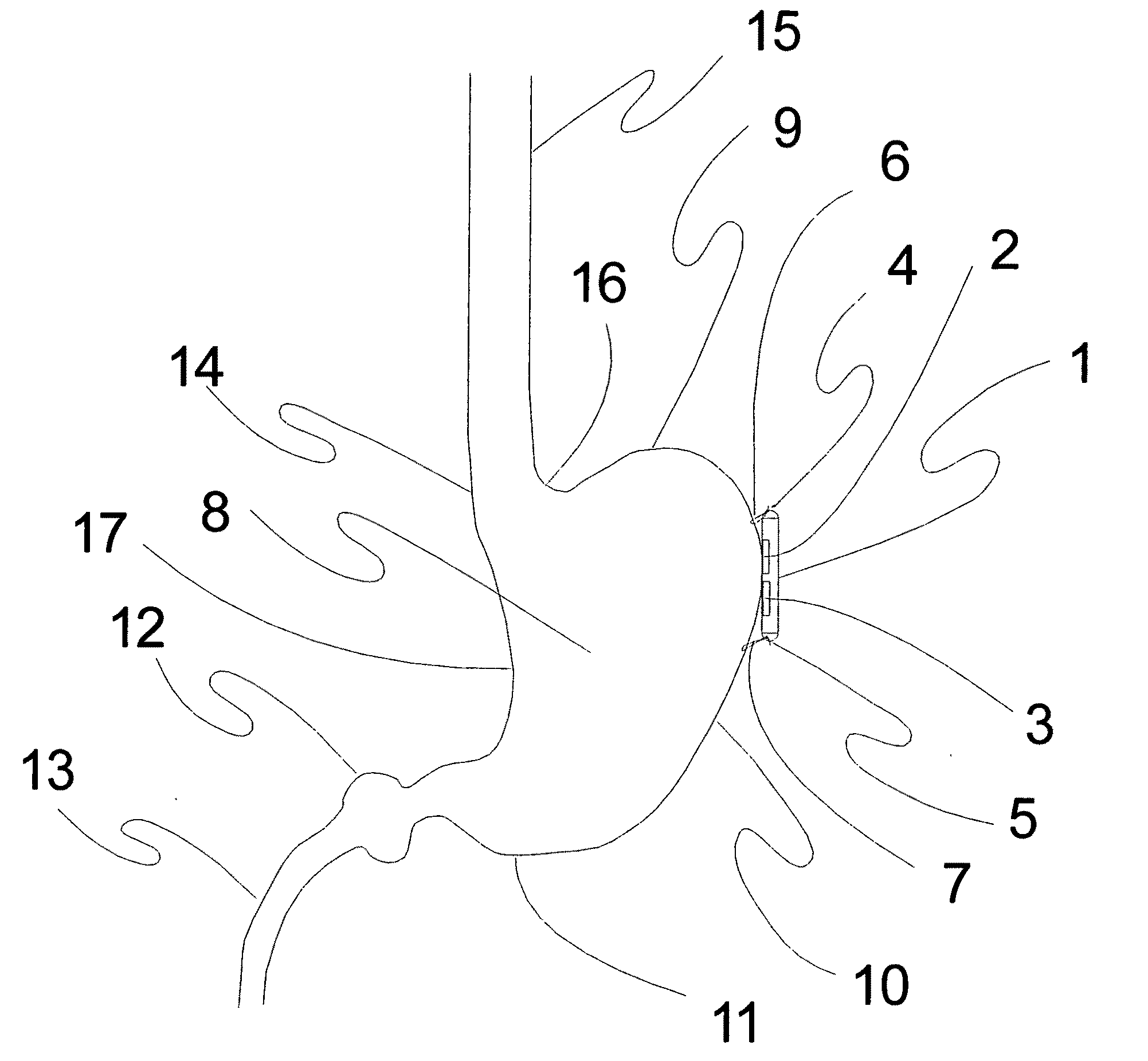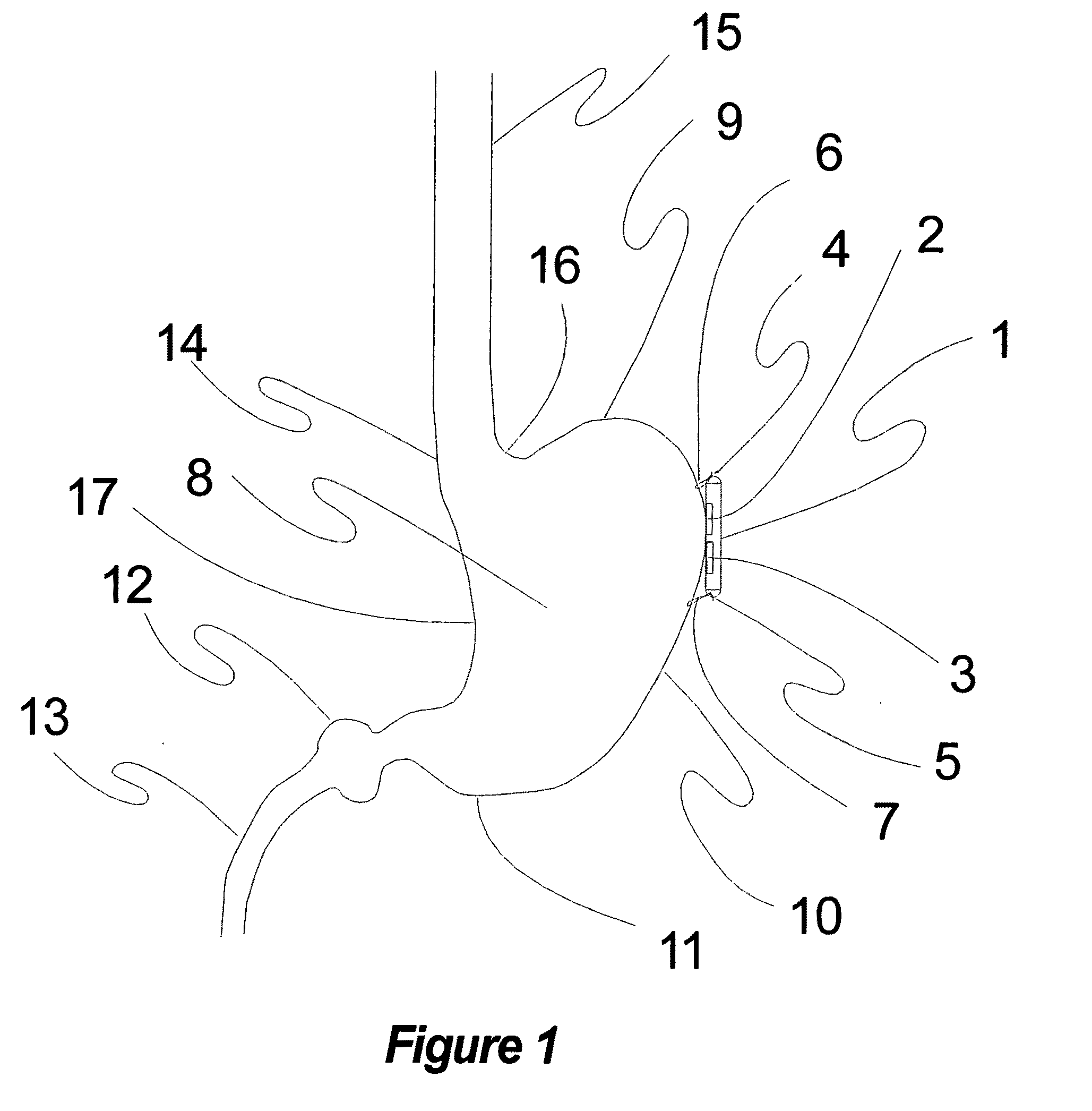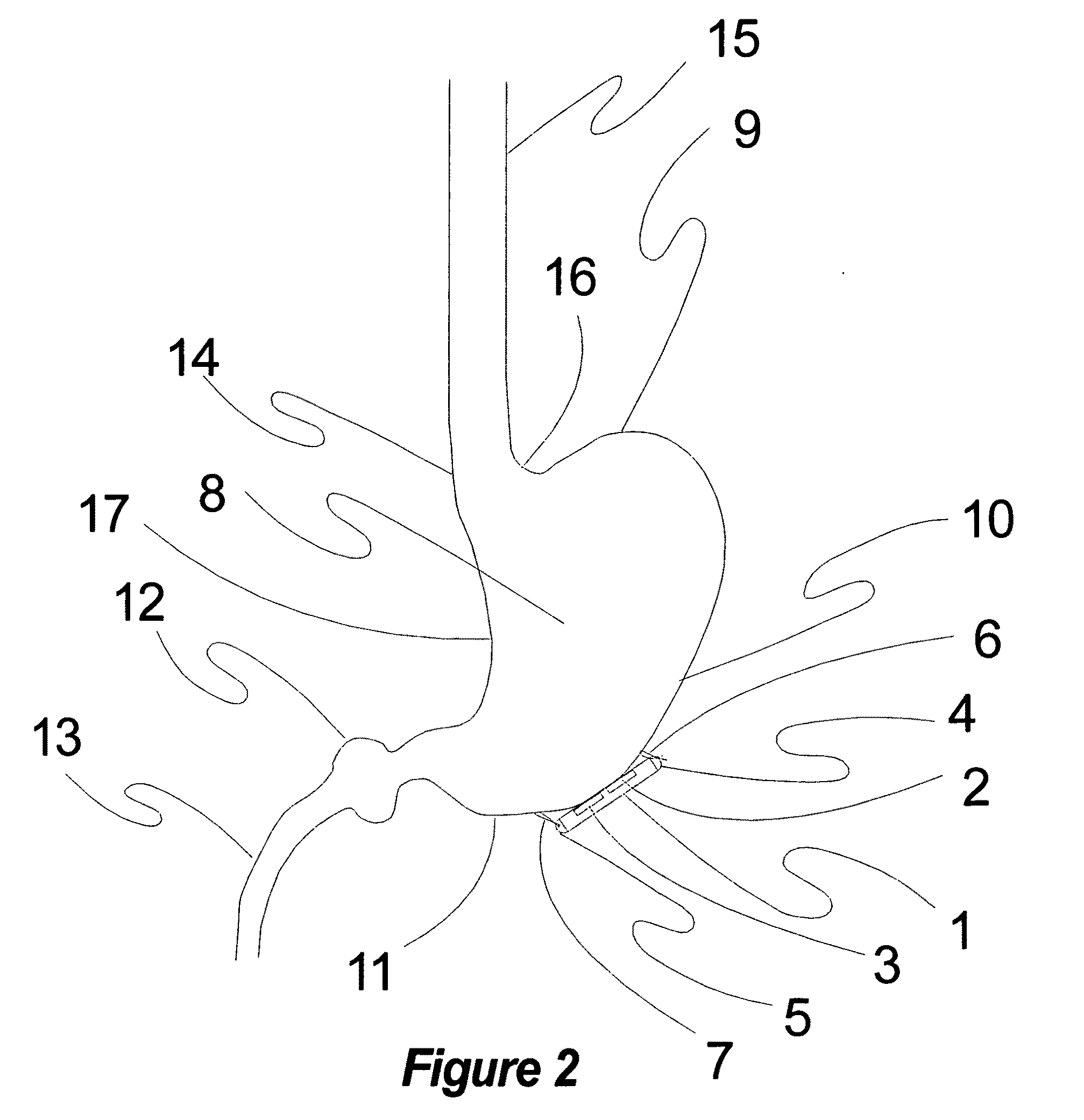Method and apparatus for conformal electrodes for autonomic neuromodulation for the treatment of obesity and other conditions
a conformal electrode and autonomic neuromodulation technology, applied in the field of autonomic neuromodulation for the treatment of obesity and other conditions, can solve the problems of satiety, morbidity and mortality, and the risk of ulcers, and achieve the effects of preventing or reducing symptoms of reflex sympathetic dystrophy, and reducing the level of neural activity
- Summary
- Abstract
- Description
- Claims
- Application Information
AI Technical Summary
Benefits of technology
Problems solved by technology
Method used
Image
Examples
Embodiment Construction
[0114]The present invention encompasses a multimodality technique, method, and apparatus for the treatment of several diseases, including but not limited to obesity, eating disorders, depression, epilepsy, and diabetes.
[0115]These modalities may be used for diagnostic and therapeutic uses, and these modalities include but are not limited to stimulation of gastric tissue, stimulation of gastric musculature, stimulation of gastric neural tissue, stimulation of sympathetic nervous tissue, stimulation of parasympathetic nervous tissue, stimulation of peripheral nervous tissue, stimulation of central nervous tissue, stimulation of cranial nervous tissue, stimulation of skin receptors, including Pacinian corpuscles, nociceptors, golgi tendons, and other sensory tissues in the skin, subcutaneous tissue, muscles, and joints.
[0116]Stimulation may be accomplished by electrical means, optical means, electromagnetic means, radiofrequency means, electrostatic means, magnetic means, vibrotactile ...
PUM
 Login to View More
Login to View More Abstract
Description
Claims
Application Information
 Login to View More
Login to View More - R&D
- Intellectual Property
- Life Sciences
- Materials
- Tech Scout
- Unparalleled Data Quality
- Higher Quality Content
- 60% Fewer Hallucinations
Browse by: Latest US Patents, China's latest patents, Technical Efficacy Thesaurus, Application Domain, Technology Topic, Popular Technical Reports.
© 2025 PatSnap. All rights reserved.Legal|Privacy policy|Modern Slavery Act Transparency Statement|Sitemap|About US| Contact US: help@patsnap.com



